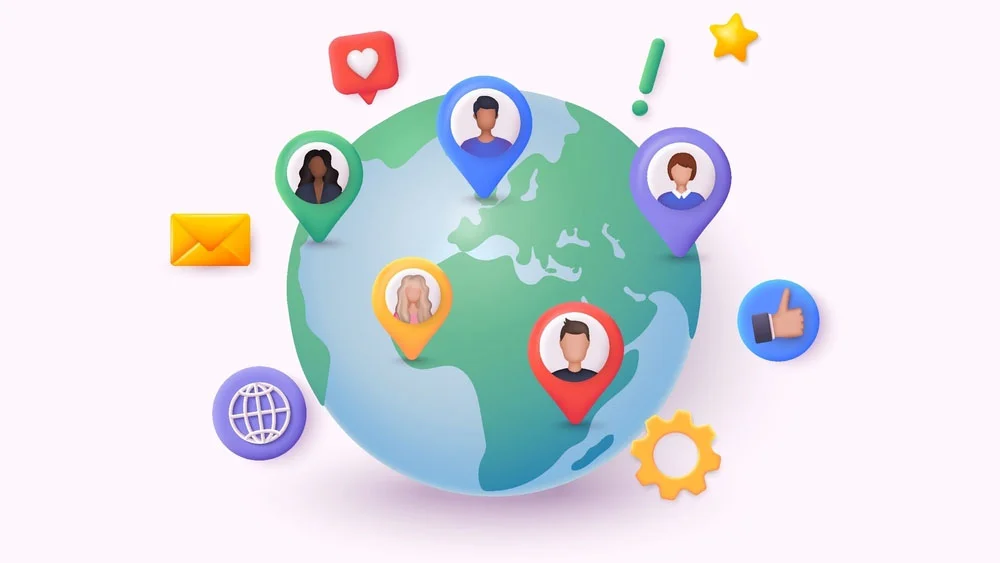Smartphones are now very common and everybody owns them. Instead of using laptops and computers to search for things, people now use these pocket-sized hubs of information. Other than that, many mobile apps have made communication so much easier. WhatsApp, Instagram, and Facebook are right now the most used apps in terms of communication. When these apps are used worldwide, many factors are involved which app developers need to look out for. One of these factors is the linguistic barriers. But in today’s world, these barriers are crumbling all because of app localization services. It is a translation that aims to eliminate these language barriers from the way so that all humans can understand these apps and use them. But translation is not enough for apps. This guide is all about mobile application translation and whether it is enough or do you need localization as well?
The reason is that apps are a complex product of software development. When translation is made part of the process, not all features work well for global audiences. In this read, we are going to talk about translation as well as why translation isn’t a complete package for your app. And then we’ll explain app localization for you and how it hooks the audience to your app.
Mobile App Translation – Is It Enough?
Translation is a huge term that makes sure that given content (app, website, document, etc.) is completely according to the needs and expectations of the target consumers. Talking specifically mobile apps, are the result of programming, coding, and an extensive framework of software. When apps are customized for foreign markets, they are translated so that foreign language audiences can make use of these apps. But as mentioned above, translation isn’t enough for an app and doesn’t check all the boxes.
Mobile app translation isn’t enough when app companies are aiming to conquer global audiences. Expanding your app to a new market doesn’t just refer to making it available in a few languages, rather it means making your app sound native to the local users. This is why app translation isn’t sufficient and you need app localization.
Mobile Application Translation: Vouch For Localization
When translation isn’t the best option for mobile apps, the ultimate solution is localization. Localization makes the app culturally sound for your diverse audience. This is why it is always the wise solution for app companies who are expanding their app to various markets. Vouching for localization means that every feature of your app, UX, UI, graphics, functional elements, etc., are tailored as per the audience’s demands. App localization allows your app to work to its full potential, enabling every feature accessible to the target app users. The success of Airbnb is right in front of you. Localization is what made this app a bigger success in the global market. More than 220 countries have Airbnb listings.
Localization makes your app relatable to the audience. A software localization agency works on the app’s textual content as well as on the UX and UI features to design your app as user-friendly despite geographical, linguistic, and cultural differences.
Mobile Application Translation: Globalization of Your App
Globalization is the trend of today. Every business is making its entry into the global market as soon as possible. Becoming a global business awards them with numerous benefits among which great revenue generation is the top one. Hence, in a world where apps are used for every little to big work, their localization is important which opens new doors for app companies. From food to travel, we all are hooked on apps which is why it is necessary for app developers to consider app localization when they are launching their app outside their local regions.
A Complete and Captivating Experience for the Global Audiences
Imagine you own a ride-hailing app and it’s working great in Japan. Now you are planning to introduce the Indonesian community to your app. You translate your app into Indonesian by hiring translators from a translation company. But still, your app isn’t adopted by the audiences and you are thinking what is it that your app lacks? Your app lacks cultural relevance, text and icon alignment, and the right-to-left/left-to-right language script (Japanese is written left to right while Indonesian, right to left).
Final Words!
So we can conclude this read by saying that surely translation isn’t enough for your app and what you need the most is app localization. It allows your app to resonate completely with the target audiences and hit success for app businesses. The path towards globalization also becomes easy and in the end, your app provides an immersive and captivating experience to the target users.




